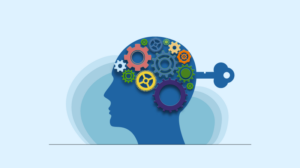Addiction is a formidable opponent that affects millions worldwide, impacting individuals and their loved ones on physical, emotional, and psychological levels. However, amidst the challenges, there is hope. Cognitive Behavioral Therapy (CBT) stands as a beacon of light in the journey toward recovery, offering practical tools and strategies. In this comprehensive guide, we explore how CBT for addiction can help individuals reclaim control over their lives, conquer addictive behaviors, and lead on a path toward lasting sobriety and wellness.
Contents
When Is CBT For Addiction Helpful?
 Cognitive Behavioral Therapy (CBT) for addiction is helpful in various situations and can be beneficial at different stages of the addiction recovery process. Here are some instances when CBT for addiction can be particularly helpful:
Cognitive Behavioral Therapy (CBT) for addiction is helpful in various situations and can be beneficial at different stages of the addiction recovery process. Here are some instances when CBT for addiction can be particularly helpful:
- During Early Intervention: CBT can be effective as an early intervention strategy for individuals who are at risk of developing addiction. Also, for those who have recently started engaging in addictive behaviors.
- In Combination with Detoxification and Withdrawal Management: CBT can complement medical interventions such as detoxification and withdrawal management by addressing the psychological aspects of addiction.
- For Co-occurring Mental Health Disorders: Many individuals with addiction also experience co-occurring mental health disorders, such as depression, anxiety, or post-traumatic stress disorder (PTSD). CBT is effective in treating both addiction and co-occurring mental health issues simultaneously.
- During Aftercare and Relapse Prevention: CBT equips individuals with relapse prevention skills and strategies to maintain their sobriety in the long term. After completing formal treatment, individuals can continue to benefit from CBT during aftercare programs, support groups, or individual therapy sessions.
- For Family Members and Loved Ones: CBT can also be helpful for family members and loved ones affected by a loved one’s addiction. Family therapy sessions using CBT principles can improve communication set boundaries, and promote understanding and support within the family system.
Overall, CBT for addiction is helpful in a wide range of situations, offering evidence-based strategies to address the cognitive, emotional, and behavioral aspects of addiction and supporting individuals.
How Is CBT Used For Addiction?
Cognitive Behavioral Therapy (CBT) is a widely used and highly effective approach to treating addiction. Here’s how CBT is typically employed in addiction treatment:
- Identifying Triggers and Cravings
CBT helps individuals identify the specific triggers and situations that lead to their addictive behaviors. By recognizing these triggers, individuals can develop strategies to avoid or cope with them effectively.
- Challenging Negative Thought Patterns
CBT focuses on identifying and challenging negative thought patterns and beliefs that contribute to addictive behaviors. By recognizing and challenging these distortions, individuals can change their thinking patterns and develop healthier coping mechanisms.
- Developing Coping Skills and Strategies
CBT teaches individuals practical coping skills and strategies to deal with cravings, stress, and other triggers without resorting to addictive behaviors. These may include relaxation techniques, problem-solving skills, and assertiveness training.
- Building Motivation and Confidence
CBT helps individuals build motivation and confidence in their ability to change. Therapists work with clients to set achievable goals, monitor progress, and celebrate successes. Eventually, this boosts their self-efficacy and commitment to recovery.
Overall, CBT provides individuals with the tools, skills, and support they need to overcome addiction. Its practical, evidence-based approach makes it a cornerstone of addiction treatment programs worldwide.
What Are The 5 Steps Of CBT?
 Cognitive Behavioral Therapy (CBT) typically involves several steps or stages to help individuals understand and address their thoughts, emotions, and behaviors effectively. While the specific approach may vary depending on the therapist and the individual’s needs, here are five common steps in CBT:
Cognitive Behavioral Therapy (CBT) typically involves several steps or stages to help individuals understand and address their thoughts, emotions, and behaviors effectively. While the specific approach may vary depending on the therapist and the individual’s needs, here are five common steps in CBT:
Assessment and Goal Setting
In the initial stage, the therapist and client collaborate to identify the client’s concerns, symptoms, and goals for therapy. This may involve discussing the client’s current problems, past experiences, and any factors contributing to their difficulties. Together, they establish clear and achievable goals that guide the therapy process.
Psychoeducation
The therapist provides the client with information about CBT principles and how thoughts, emotions, and behaviors are interconnected. Clients learn about the cognitive model, which highlights the influence of thoughts on feelings and behaviors, and how changing maladaptive thought patterns can lead to positive changes in emotions and behaviors.
Identifying Thoughts and Beliefs
Clients learn to identify and become aware of their automatic thoughts, beliefs, and assumptions that contribute to their emotional distress or problematic behaviors. They learn to recognize cognitive distortions, such as black-and-white thinking, catastrophizing, or overgeneralization, which can fuel negative emotions and behaviors.
Challenging and Restructuring Thoughts
Once identified, clients learn to challenge and evaluate the accuracy and validity of their negative thoughts and beliefs. They examine evidence for and against their automatic thoughts, consider alternative perspectives, and develop more balanced and realistic interpretations of situations. Through guided questioning and exploration, clients learn to replace unhelpful thought patterns with more adaptive and constructive ones.
Behavioral Strategies and Homework Assignments
CBT often involves implementing behavioral strategies and practicing new skills outside of therapy sessions. Clients engage in behavioral experiments, role-plays, or exposure exercises to test out new behaviors and overcome avoidance or safety behaviors. Homework assignments, such as keeping thought records, practicing relaxation techniques, or gradually facing feared situations, reinforce learning and facilitate lasting change.
These steps are iterative and may overlap throughout therapy. CBT is a collaborative and goal-oriented approach, empowering individuals to develop effective coping skills and make meaningful changes in their lives.
What Are The Benefits And Risks Of CBT For Addiction?
 CBT for addiction is a widely used and evidence-based approach for treating addiction, offering several benefits. However, like any form of therapy, there are also potential risks to consider. Here are some of the benefits and risks of CBT for addiction:
CBT for addiction is a widely used and evidence-based approach for treating addiction, offering several benefits. However, like any form of therapy, there are also potential risks to consider. Here are some of the benefits and risks of CBT for addiction:
Benefits
- Empowers Individuals: CBT empowers individuals to take an active role in their recovery by providing them with practical tools and strategies to address their addictive behaviors. It emphasizes personal responsibility and self-efficacy, enabling individuals to develop skills for coping with cravings.
- Targets Underlying Issues: CBT addresses the underlying psychological factors contributing to addiction, such as negative thought patterns, maladaptive coping strategies, and co-occurring mental health disorders. By targeting these issues, CBT helps individuals understand the root causes and develop healthier ways of thinking and behaving.
- Evidence-Based: CBT is supported by a robust body of scientific research demonstrating its effectiveness in treating addictions. It is endorsed by organizations such as the National Institute on Drug Abuse (NIDA) and the Substance Abuse and Mental Health Services Administration (SAMHSA) as a recommended treatment approach for addiction.
- Flexible and Tailored: CBT can be adapted to meet the unique needs and preferences of individuals in treatment. Therapists work collaboratively with clients to develop personalized treatment plans, focusing on specific goals and areas of concern.
- Promotes Long-Term Recovery: Finally, it equips individuals with the skills and strategies they need to maintain their sobriety and prevent relapse over the long term. By teaching adaptive coping mechanisms, stress management techniques, and problem-solving skills, CBT helps individuals navigate the challenges.
Risks
- Not Suitable for Everyone: While CBT is effective for many individuals with addiction, it may not be suitable for everyone. Some individuals may have difficulty engaging in the cognitive aspects of therapy or may require additional support to address complex issues underlying their addiction.
- Requires Commitment and Effort: CBT requires significant commitment and effort from individuals in treatment. It involves actively participating in therapy sessions, completing homework assignments, and practicing new skills outside of therapy. Individuals who are not motivated or willing to engage in the therapeutic process may not benefit as much from CBT.
- Potential for Emotional Discomfort: CBT may involve exploring painful emotions, challenging long-held beliefs, and confronting difficult memories or experiences. This process can be emotionally challenging and may temporarily increase feelings of distress or discomfort before improvements are seen.
- Relapse Risk: While CBT teaches relapse prevention skills, there is still a risk of relapse, particularly during times of stress, transition, or exposure to triggers. Individuals may experience setbacks or lapses in their recovery journey, requiring ongoing support.
Overall, the benefits of CBT for addiction often outweigh the risks, particularly when delivered by qualified therapists in a supportive and structured treatment environment.
Conclusion
In conclusion, CBT for addiction stands as a beacon of hope for those struggling, offering practical tools and strategies to break free from the cycle of dependency. Through CBT, individuals learn to identify and challenge negative thought patterns, develop coping skills to manage cravings and triggers, and build a fulfilling life.
With dedication, support, and a commitment to change, CBT paves the way toward a brighter future. A place where individuals can thrive and embrace the possibilities of a life free from addiction.
